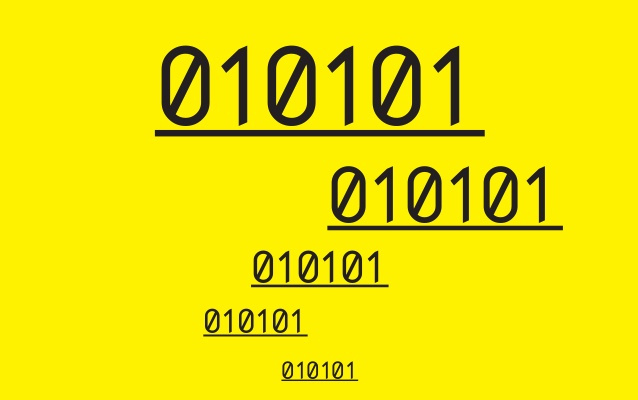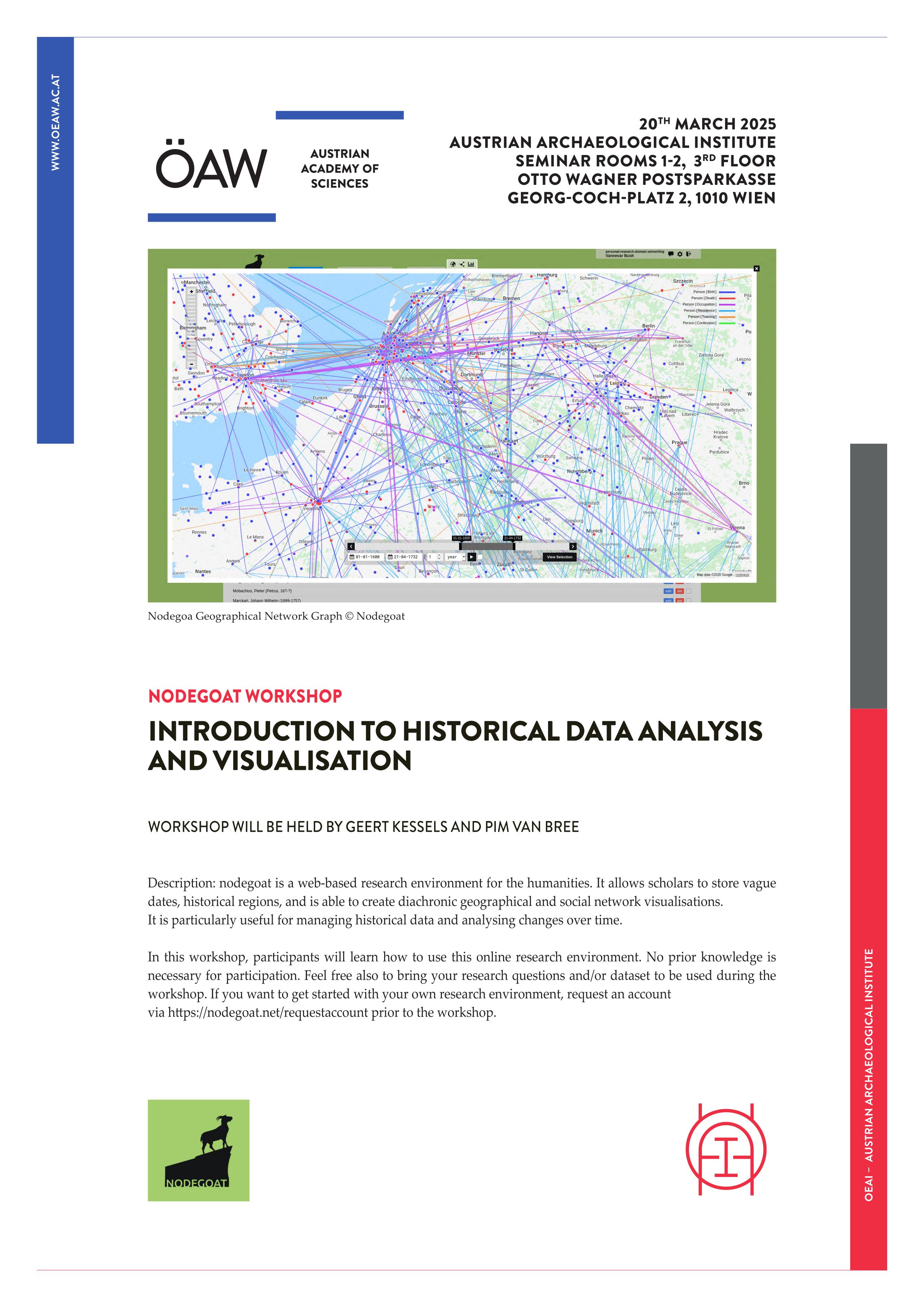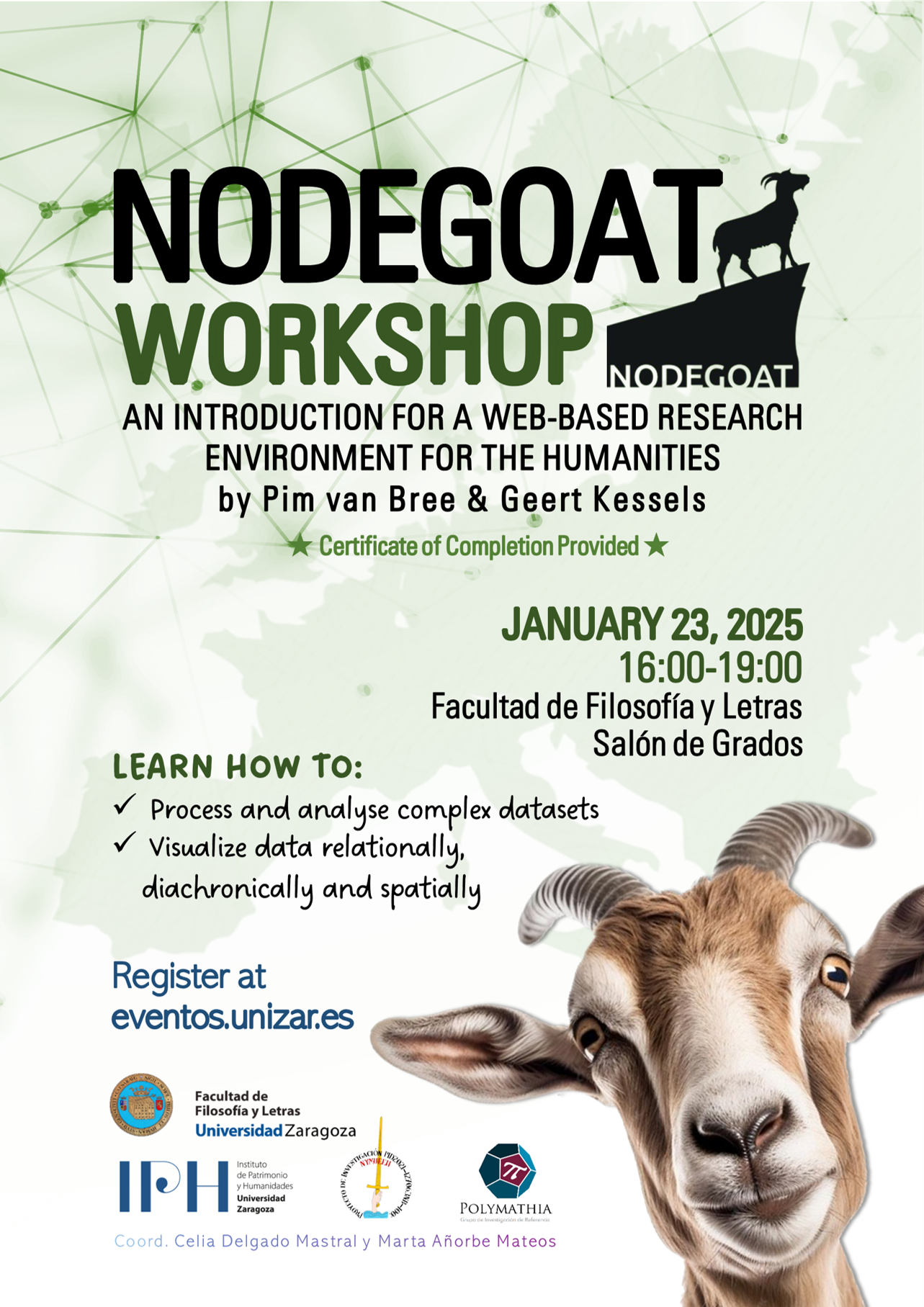Teacher training session on data modelling at the German Historical Institute in Paris
CORE Admin
We will give a workshop with the title "Teaching Database Skills for Historical Research with nodegoat" on June 17th at the Institut historique allemand Paris. This workshop is part of the conference 'Teaching History in the Digital Age – international perspectives #dhiha8'. You can find more information about the conference here.We have added the programme of the conference below.
This workshop will train participants how to familiarise students with historical databases. As working with historical databases can be perceived as a complex process, we have created a didactic method that takes students step by step through this process. Students will first learn how to explore data in a historical database, then they will learn how to enter data into this database, and finally they will learn how to construct a database of their own. We will use nodegoat in all of these steps.
Exploring Data
When you start to teach database skills, it is important to allow students to get a good understanding of what a relational database is. In nodegoat this can be done by browsing through different types of historical data, following relationships, discussing temporal and spatial attributes of objects, filtering data, and visualising data. You can include more advanced approaches by running network analytical calculations or using deep filters and complex scopes.
Entering Data
Once your students have a good understanding of what a relational database is, you can start entering data into a nodegoat environment. On this level you can discuss questions related to ambiguous or incomplete sources, inferring data, and what to do with conflicting source material. On a more advanced level you can connect the decisions taken in this process with the resulting visualisations and network analytical calculations. You can also add multi-level relationships and complex geometrical shapes.
Modelling Data
Now that your students are comfortable with entering data into a preconfigured data model, you can start to teach them how to construct their own data model. Start by drawing out a conceptual data model and create a logical data model based on this. Once the data model is complete, it can be implemented in nodegoat. You can explore which data model works best for historical network analysis, and how levels of uncertainty can be addressed in a data model.
After this workshop, you should be ready to teach your students how to create a data model for a historical database.
You can register for this workshop via event@dhi-paris.fr.


